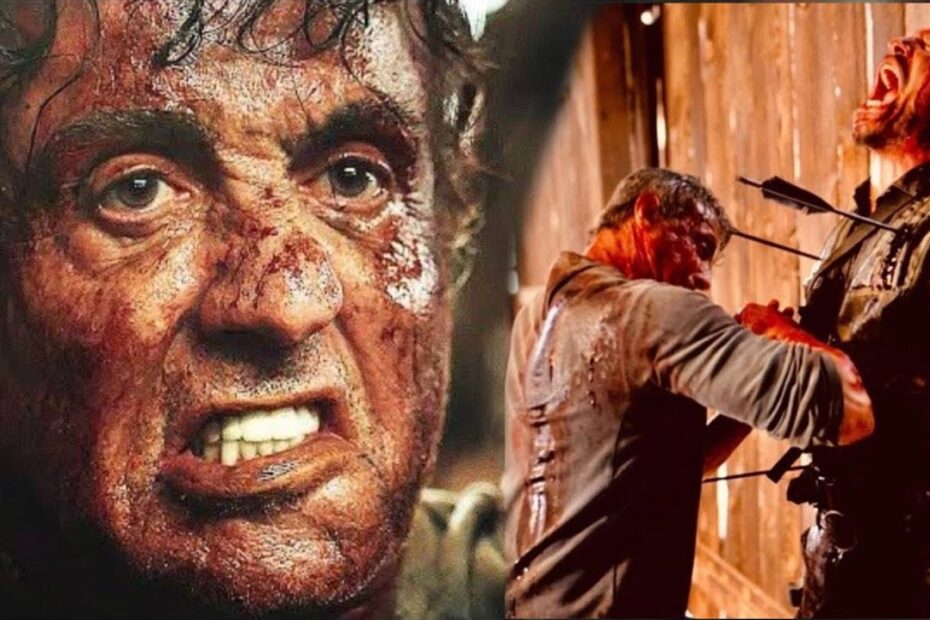Rambo: Last Blood Review – A Gritty Finale or Franchise Misstep?
John Rambo’s Retirement Plan: Stabbing, Explosions, and a Dash of Existential Dread
Is Rambo: Last Blood a fitting send-off for the bandana-clad icon, or did Sylvester Stallone accidentally wander into a ”Taken” fanfic? The film tries to split the difference between “gritty finale” and “geriatric fever dream,” sending our favorite PTSD-riddled warrior to fight Mexican cartels with the subtlety of a honey badger in a china shop. Imagine *Home Alone*, but if Kevin’s traps involved machetes, improvised landmines, and a poncho that somehow still looks cool after 37 years.
Tone: PTSD Meets Exploding Chickens
The movie’s mood swings harder than Rambo’s archery skills. One minute, it’s brooding over trauma and family; the next, it’s a symphony of gore set to a banjo cover of “Paint It Black.” Critics argue it’s less “final chapter” and more “midlife crisis: the motion picture.” Highlights include:
- A villain so generically evil, he probably twirls a mustache off-camera.
- A third act that transforms into a slasher film, complete with Rambo as the killer and a cave system that defies OSHA regulations.
- Dialogue so wooden, you’ll wonder if it’s sponsored by IKEA.
Legacy or Letdown? Depends on Your Bloodlust
Fans of the franchise’s ’80s glory days might cheer at seeing Stallone grunt through one last rodeo, complete with a finale that’s 10% pathos and 90% creative dismemberment. But if you hoped for nuance, you’ll find more depth in Rambo’s shovel collection. It’s either a violent love letter to the character or a 2-hour PSA on why you shouldn’t steal his niece’s passport. Either way, you’ll leave asking: “Was that a movie or a therapy session… with explosions?”
Breaking Down Rambo’s Last Blood: Plot Holes, Violence, and Legacy Analysis
Rambo vs. Reality: When Plot Armor Meets Plot Holes
Let’s address the elephant in the jungle: Rambo’s ability to survive a collapsing mine shaft after taking enough shrapnel to stock a medieval armory. *Last Blood* treats logic like Rambo treats bad guys—brutally and without mercy. How does a 70-something guerrilla warfare grandpa out-sprint a literal explosion? Why does the Mexican cartel, with infinite henchmen, forget to Google “how to spot a trap”? And why does no one question the GPS tracker hidden in a pill that somehow survives digestion? The script’s answer: “Because Rambo.”
Violence: It’s Not a War Crime If It’s Awesome?
The violence here isn’t just graphic—it’s a Looney Tunes episode directed by a honey badger on espresso. From improvised landmines to a finale that turns Rambo’s ranch into *Home Depot: Horror Edition*, the film asks, “What if *Home Alone*… but with war crimes?” Highlights include:
- A kill count higher than a toddler’s candy intake post-Halloween
- A villain death so gratuitous, even the *Final Destination* franchise blushed
- The subtle message that retirement plans should include punji sticks
Legacy Analysis: From PTSD Poster Boy to… Whatever This Is
*First Blood* gave us a traumatized vet screaming about abandoned heroes. *Last Blood* gives us a septuagenarian with a cave network and a grudge. The legacy? It’s complicated. The franchise morphed from anti-war commentary into a ”what if Rambo, but *Taken*?” fanfic. Yet, in its absurdity, it’s weirdly loyal to the brand: hyper-violent, unapologetically jingoistic, and proof that Stallone’s biceps have their own IMDb page. The real plot hole? Why we keep watching. (Okay, fine—it’s the traps.)
